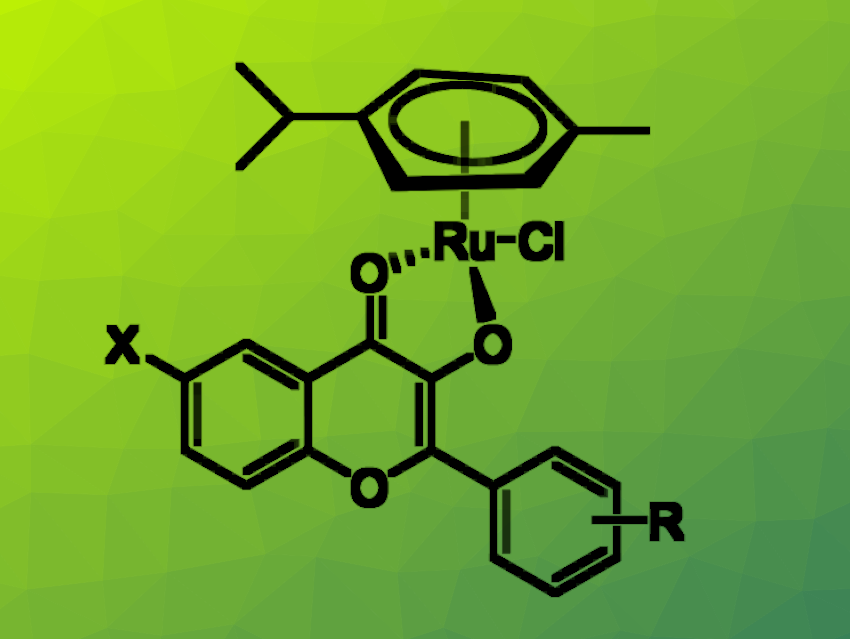Flavonoids are polyphenolic compounds found, e.g., in different plants used in foods. They have a basic skeleton composed of 15 carbon atoms, with two phenyl rings and one tetrahydropyran-like ring. Depending on the substitution pattern, flavonoids can act as chelating ligands for metals, and they can also inhibit the production of reactive oxygen species (ROS), which can help to prevent the occurrence of tumors. Flavonols are a subclass of flavonoids with a hydroxyl group at the 3-position of the heterocyclic ring. The formation of flavonol-metal complexes can enhance their biological activities. Ruthenium is a metal that has applications in pharmaceutical chemistry.
Jih-Jung Chen, National Yang Ming Chiao Tung University and Taipei Medical University Hospital, Taipei, Taiwan, China Medical University, Taichung, Taiwan, Tzenge-Lien Shih, Tamkang University, New Taipei City, Taiwan, and colleagues have synthesized seven flavonol-Ru(II) complexes (general structure pictured) and evaluated their biological activities. The team prepared the complexes from the corresponding flavonols and dichloro(p-cymene)ruthenium(II) dimer. The desired products were obtained in yields of 76–88 %.
The researchers then tested the free radical scavenging effects of the compounds using an in-vitro assay, their anti-inflammatory activities based on their nitric oxide (NO) inhibitory effects, as well as their anti-cancer activities using cell cultures. They found that three of the compounds showed potent antioxidant activities, and one of these three showed a higher anti-inflammatory activity compared with quercetin, which was used as a control. The same compound showed activity against a cell line of human non-small-cell lung cancer cells. According to the team, the work represents the first report of free radical scavenging abilities and antioxidant activity of flavonol-Ru(II) complexes.
- Flavonol‐ruthenium complexes as antioxidant and anticancer agents,
Tzenge-Lien Shih, Ting-Wei Wu, Yi-Cheng Chu, Chuan-Hsin Chang, Yu-Hui Hsieh, Mei-Hsin Tang, Pei-Hsuan Hsu, Jih-Jung Chen,
ChemMedChem 2024.
https://doi.org/10.1002/cmdc.202400313




